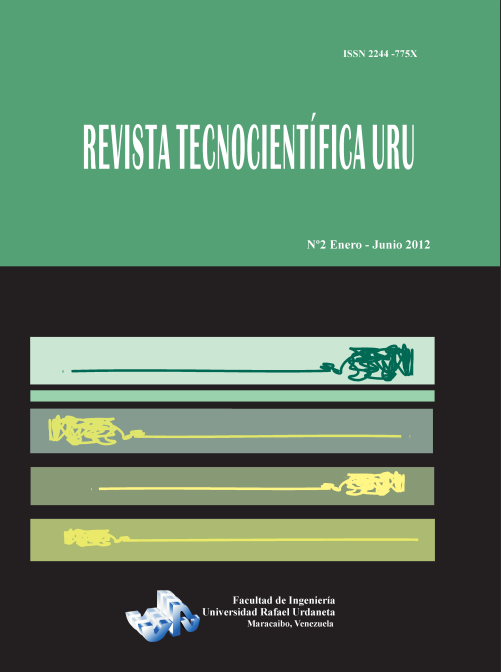Ingeniería Química: Historia y Evolución
DOI:
https://doi.org/10.5281/zenodo.15741527Palabras clave:
Ingeniería Química, Historia, Evolución, Futuro.Resumen
La Ingeniería Química puede definirse, en una forma amplia y general, como la rama de la ingeniería que se ocupa de la aplicación de las ciencias, como son la matemática, la química, la física y la biología, en los procesos de conversión de materias primas o sustancias químicas, para la generación de productos más útiles o valiosos, de una manera económica y sostenible, es decir, la gestión de los recursos con control de los procedimientos de seguridad y prevención de pérdidas y la protección del medio ambiente y la salud. Así que, de alguna manera, la Ingeniería Química es una disciplina con un carácter dual, que combina una faceta científica, junto con una más pragmática, las necesidades de la industria y la sociedad. Al revisar la evolución histórica de la Ingeniería Química se puede observar que los cambios en la disciplina y en los planes de estudio, se han dado como una reacción a los estímulos tanto de la ciencia como de la industria. La combinación de, por ejemplo, las necesidades de la sociedad moderna en cuanto a energía y confort, la conservación del ambiente, nuevas áreas como la biotecnología y la nanotecnología, la eficiencia en la producción y manufactura, los enfoques de múltiples escalas, los continuos avances de las herramientas computacionales, las nuevas técnicas y métodos de análisis, entre otros, así como los grandes accidentes y catástrofes relacionados con la industria química que han ocasionado pérdidas humanas y económicas, han impulsado y generado la mayoría de los cambios y propuestas.
Descargas
Referencias
1. Favre E., Falk, V., Roizard C., and Shaer E. (2008) Trends in chemical engineering education: Process, product and sustainable chemical engineering challenges. Education for Chemical Engineers, 3: e22-e27.
2. Perkins, J. D. (2003) Chemical Engineering – the First 100 Years. In Chemical Engineering: Vision of the World. R.C. Darton, R.G.H. Prince and D.G. Wood (Editors). Elsevier Science B.V. Chapter 2. p 11-40.
3. Reynolds T.S. (1983) 75 Years of Progress – A History of the American Institute of Chemical Engineers 1908-1983, AIChE, New York.
4. Morton, F. (1982) A Short History of Chemical Engineering in the North-West of England. In: A Century of Chemical Engineering. Furter W. F. Editor. Plenum Press, New York.
5. Kramers, H. (1989) Chemical Engineering in the Netherlands 1935-1965. In: One Hundred Years of Chemical Engineering. Peppas N. A. Editor. Kluwer Academic Publishers, Dordrecht.
6. Divall C. y Jhonston S.F. (2000). Scaling Up – The Institution of Chemical Engineers and the Rise of a New Profession. Kluwer Academic Publishers, Dordrecht.
7. Shemilt L.W. (1980). A Century of Chemical Engineering Education in Canada. In: History of Chemical Engineering. Advances in Chemistry Series N° 190, Furter W. F. Editor, ACS. Washington.
8. Brown, G.G. (1950). Unit Operations. John Wiley & Sons, NY.
9. Smith J. M. (1956). Chemical Engineering Kinetics. Mc Graw Hill, NY.
10. Bird, R.B., Stewart, W.E. and Lightfoot, E.N. (1960). Transport Phenomena. First Edition. Wiley, New York.
11. Bird, R.B., Stewart, W.E. and Lightfoot, E.N. (2001). Transport Phenomena. Second Edition. Wiley, New York.
12. Kletz T. (1990) Dispelling Chemical Engineering Myths. 3rd Edition. Taylor & Francis, London. P. 66-67.
13. Aparicio F, J.A. Seveso 1976 (2001) disponible en electrónico en http://www.proteccioncivil-anda- lucia.org/Documentos/Seveso.htm. Consultado el 27 de enero de 2011.
14. Directive 82/501/EEC of 24 June 1982 on the major accident hazards of certain industrial activities (Official Journal of the European Communities No L 230 of 5 August 1982. Disponible en http:// mahbsrv.jrc.it/downloads-pdf%5CSeveso1-LEG-EN.pdf.
15. Kletz, (1985) Trevor A. What went wrong? Case Histories of Process Plant Disasters. Houston Gulf Publishing Company.
16. De Grazia A. (1985). A Cloud over Bhopal. Causes, Consequences and Constructive Solutions. First Edition. Published by the Kalos Foundation for the India –American Committee for the Bhopal Victims. Metron Publications, Princeton, NJ 08542.
17. European Commission Environment. Chemical Accidents (Seveso II) In: http://ec.europa.eu/environment/seveso/legislation.htm. Consultado el 27 de enero de 2011.
18. Willey R. J., Crowl D. A. y Lepkowski W. (2005). The Bhopal tragedy: its influence on process and community safety as practiced in the United States. Journal of Loss Prevention in the Process Industries, 18: 365–374.
19. American Chemical Council. Responsible Care. Consultado el 8 de febrero de 2011 en: http://www.americanchemistry.com/s_responsiblecare/sec.asp?CID=1289&DID=4841.
20. Decreto Presidencial N° 2195. Reforma del Reglamento de Prevención de Incendios. República de Venezuela. Gaceta Oficial Nº 30.375 Extraordinario de fecha 17 de agosto de 1983.
21. Reglamento de Prevención de Incendios. República de Venezuela. Gaceta Oficial Nº 30.375 E de fecha 16 de abril de 1974.
22. LOPCYMAT (1986) Ley Orgánica de Prevención, Condiciones y Medio Ambiente de Trabajo. República Bolivariana de Venezuela. Gaceta Oficial Nº 3.850 Extraordinario de fecha 18 de julio de 1986.
23. LOPCYMAT (2005) Ley Orgánica de Prevención, Condiciones y Medio Ambiente de Trabajo. República Bolivariana de Venezuela. Gaceta Oficial 38236 del 26 de julio de 2005.
24. Ley Orgánica del Ambiente (2006) República Bolivariana de Venezuela. Gaceta Oficial Nº 5.833 Extraordinario de fecha 22 de diciembre de 2006.
25. ICCA. International Council of Chemical Associations. Responsible Care. Consultado el 8 de febre- ro de 2011 en http://www.iccachem.org/Home/ICCA-initiatives/Responsible-care.
26. FEIQUE. Federación Empresarial de la Industria Química Española. Disponible en: http://www. feique.org/. Consultado el 6 de febrero de 2011.
27. SACHE. Safety Chemical Engineering Education. Disponible en: http://www.sache.org/.
28. ABET. Accreditation Board for Engineering and Technology. In: http://www.abet.org/.
29. ABET. Accreditation Board for Engineering and Technology. Disponible en: http://www.abet.org/ Linked%20Documents-UPDATE/ Program%20Docs/ abet-eac-criteria-2011-2012.pdf. Consultado el 6 de febrero de 2011.
30. Cobb, J. T. Jr., Patterson, G. K. y Wickramashinghe, S. R. (2007). The Future of Chemical Engineering – An Educational Perspective. Chemical Engineering Progress, 103 (1): 30S-35S
Descargas
Publicado
Número
Sección
Licencia
Derechos de autor 2012 @copyright

Esta obra está bajo una licencia Creative Commons Reconocimiento 3.0 Unported.






